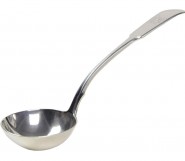Lot #133 - Timmy Payungka (Tjapangati)
-
Auction House:Mossgreen
-
Sale Name:Australian Indigenous & Oceanic Art
-
Sale Date:22 Jul 2014 ~ 6.30pm (Part 1 - Lots 1 - 198)
23 Jul 2014 ~ 2.30pm (Part 2 - Lots 199 - 331) -
Lot #:133
-
Lot Description:Timmy Payungka (Tjapangati)
(circa 1942-2000)
Tingari Ceremonies at Parrayingi (Gibson Desert) (1987)
synthetic polymer paint on linen
152 x 91 cm -
Provenance:Papunya Tula Artists, Alice Springs (catalogue number obscured by frame); Songlines Across Australia Collection, Melbourne
-
Notes:Timmy Tjapangati was born at Parayilpil, near Wilkinkarra (Lake Mackay). A series of shallow claypans, Parayilpil is one of the least accessible places on the Australian continent; enclosed by high dunes to the north and south, and the great salty expanse of Wilkinkarra to the east. As a boy Tjapangati walked hundreds of kilometres from his country to a ration depot at Haasts Bluff in the Western MacDonnell Ranges. Here he stayed for a time before returning with his family to the dunefields of Western Desert.1 In 1957, the leader of the ÔPintupi patrolÕ Jeremy Long encountered TjapangatiÕs family at Yarrannga. I remember being struck by how bright and alert the younger manÕs eyes were and how extraordinarily straight his back was. Living close to nature clearly had its advantages. He offered to lead us next day to another water hole, Yumarri, where we might find another group. But there we saw only distant smokes to the west. This young man, later known as Tim Payunka Tjapangarti, wanted to visit his mother, who had walked into Haasts Bluff a year earlier, so we gave him a lift to the settlement [400 kilometres to the east] on our return. The next winter I took Tim back beyond the Kintore Range so that he could rejoin his family. I remember him leaving us with a bag of supplies on his head and disappearing over the sandridge.2 Tjapangati returned to Haasts Bluff and participated in the inception of painting at Papunya in 1971. His artistic career was interrupted when he left the settlement to spend time with family at Balgo in 1973. He was instrumental in his peopleÕs reoccupation of Pintupi Country in the early 1980s. With permanent camps established at Kintore and Kiwirrkurra, Tjapangati and his countrymen resumed hunting in the traditional manner. Using fire set in spinifex grasslands, the burrows of hibernating goannas were easily identified and the tracks of small game, such as feral cats followed. It was the resulting pattern of persistent smoke on the southern horizon that attracted the attention of a family group, who had remained around Parayilpil and nearby Marawa, long after their countrymen had migrated to settlements at Haasts Bluff, Papunya or Balgo. Finally after a gap of twenty years, the family of nine was reunited with relatives. Having experience the hazards of sudden contact with Western culture at Papunya and Haasts Bluff, community leaders put measures in place to enable the Ônew peopleÕ to be more gently integrated into the complexity of twentieth century life. Tjapangati was chosen as a respected countryman to take care of the well being of the young men in the group.3 While adhering to many of the general principles of Western Desert art, TjapangatiÕs painting style is unique and challenging. His forms have a restless kinetic quality. Unlike representations of the Tingari cycle by other Western Desert artists, the sets of concentric circles in Tingari Ceremonies at Parrayingi are not subordinated to the strictures of the rectangular format. It is as if Tjapangati chose to depict events at one locale and forces familiar to him but unseen by the novice viewer have acted on the symbolic elements, compelling them into place. TjapangatiÕs line interrupts the orthodox site-travel modality of Western Desert art, as arcs appear to fly-over underlying paths, switchbacks burrow into the ground and crescents ricochet from one place to another. The picture plain is further activated by the play of negative and positive space, like Edgar RubinÕs famous figure-ground-vase-face, concentric bands of grey and white jump forward to demand the viewerÕs attention. TjapangatiÕs paintings operate on a dynamic and eccentric logic. The complex topography of the artistÕs country is encoded to become an animated mythic landscape. John Kean 1 Vivien Johnson, Lives of the Papunya Tula Artists. IAD Press 2008, pp. 47-9. 2 Jeremy Long, ÔMeeting with StrangersÕ, in Philip Batty, Colliding Worlds: First contact in the Western Desert 1932-1984, Museum Victoria, Melbourne, 2006, 31-3 3 The author was employed by the Pintupi Homelands Health Service, 1984-5, where he witnessed Tjapangati hunting and looking after the Ônew peopleÕ as they became familiar with community life.
-
Estimate:A$8,000 - 12,000
-
Realised Price:
-
Category:Art
This Sale has been held and this item is no longer available. Details are provided for information purposes only.










